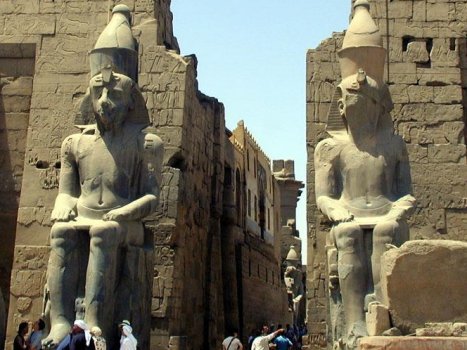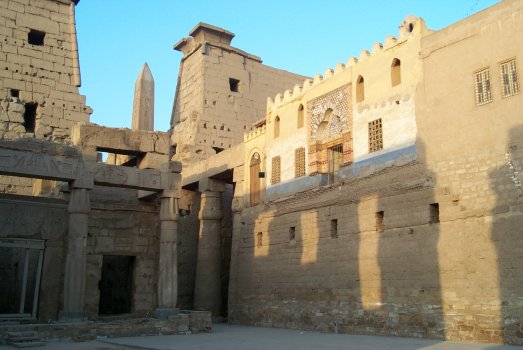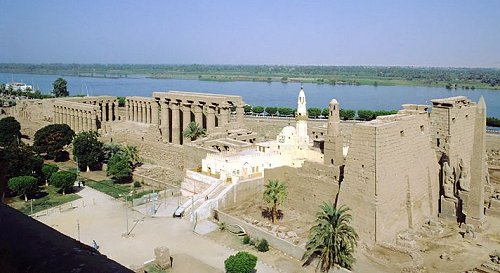For more than a millenium most of this temple lay buried beneath the sand. These colossi, when discovered, were covered up to the neck. Around 1243 CE a mosque was built to house the tomb of the 13th century Muslim saint Sidi Abul Haggag. You can see it there, through the entrance on the left. Today, the feast of Abul Haggag is celebrated every year. The followers of the saint drag his wooden barque on a cart through the town of Luxor. It's even possible that this feast is a modern adaptation of the ancient Egyptian rites for Opet.
During the 19th Century scholars discovered that beneath the mosque lay an entire temple complex. Excavations of Luxor left the mosque several stories above ground, which explains why the doorways you see above you open onto apparent nothingness. As you can see, the mosque covers the northeast corner of Ramses' Courtyard and now comprises an important part of the Luxor temple complex.



|


